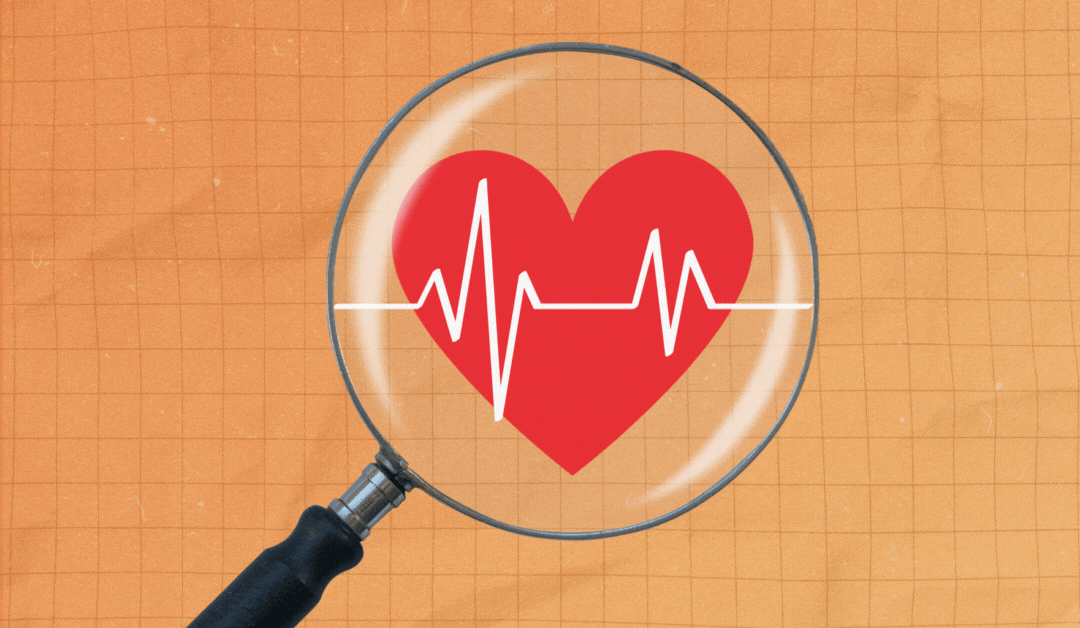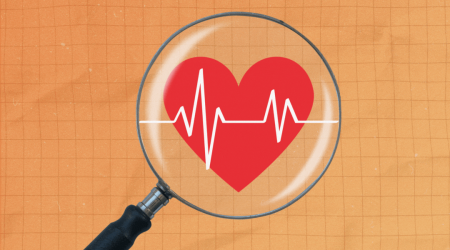
If you’re asked to share a few fun facts about yourself, you’re probably not going to rattle off your blood pressure or cholesterol levels (even if your “good” cholesterol is, well, really good). But you should have a solid sense of what those numbers are, experts say. Why? “That old adage that an ounce of prevention is worth a pound of cure is absolutely correct,” says Dr. Josh Septimus, an internal medicine physician with Houston Methodist Hospital. A small number of conditions, including heart disease and metabolic disorders, cause an enormous amount of suffering. “If we can identify a few things that help us prevent those morbidities, it’s very much worth your time.”
[time-brightcove not-tgx=”true”]That said, you don’t have to know everything. Experts widely pan full-body health scans, for example, that claim to catch early signs of problems like cancer. And while it’s certainly possible to track and analyze your health data via smartwatches and other gadgets, you’re not necessarily going to gain much by doing so. Septimus’ patients sometimes “get lost in some random number,” he says—and when that happens, he refocuses them “on the basics.”
Here’s a look at the seven metrics everyone should know about their own health.
Your waist circumference
Septimus always tells medical students that if he had only one measurement to use to predict how greatly they’d suffer from medical problems, it would be waist circumference, which reveals the amount of fat around your middle section. If you have a waist size greater than 35 inches for women or 40 inches for men, your risk for heart disease, Type 2 diabetes, and other metabolic problems increases.
This is a much more useful measure than BMI, he says—a notion supported by research. It provides a more accurate estimate of abdominal fat, which predicts disease risk. Plus, BMI—which is calculated based on height and weight—doesn’t account for factors like muscle mass.
To figure out your waist circumference, wrap a tape measure around your middle section, right at your belly button. Make sure you’re standing up, and take the measurement after you exhale. “Know your number, and if it’s too big, try to make it smaller,” Septimus says. He regularly tells patients he doesn’t care what the scale says—that number can be influenced by, for example, new muscle mass—but he does like to challenge them to lose 1 to 2 inches off their waist in six months. “If you’re going to the gym and your waist size is dropping, it’s working,” he says. “If your waist size is not changing, it’s not working,” in which case it’s time to reevaluate your strategy, ideally with the help of a doctor.
Your cholesterol profile
You should always have a sense of your total cholesterol, high-density lipoprotein (HDL) cholesterol, and low-density lipoprotein (LDL) cholesterol. That’s why Dr. Sam Setareh, a staff cardiologist at Cedars-Sinai Medical Center and senior clinical researcher at the National Heart Institute, runs lipid panels on his patients at least annually. He repeats the tests every three to six months if someone has elevated levels they’re working on lowering. LDL, he adds, is the most important value: “That’s going to tell me about the patient’s risk of developing coronary disease or atherosclerosis,” also known as plaque-clogged arteries. (Not every doctor does this automatically, so you may need to ask for a panel if it’s been a while.)
Read More: What to Do If Your High Cholesterol Is Genetic
Many people with high LDL will be prescribed medication like a statin, but that depends on factors like your personal risk level. As the U.S. Centers for Disease Control and Prevention points out, you might be prescribed medicine if your LDL is 190 mg/dL or higher, or if you’re age 40-75, have diabetes or a high risk of heart disease or stroke, and have an LDL level of 70 mg/dL or higher.
Your blood pressure
If you have high blood pressure, your heart has to work harder to pump blood—which, over time, can damage the walls of the blood vessels, leading to atherosclerosis. As Septimus points out, hypertension can trigger complications like heart attack and stroke, while hurting organs including your brain and kidneys. That’s why it’s so important to check your blood pressure at least once a year, and more often if you’re at higher risk based on factors like age, family history, and obesity.
According to the American Heart Association, normal blood pressure is less than 120/80 mmHg. Exactly how your doctor proceeds if yours is high depends on your individual circumstances. If you’re a 35-year-old with mildly elevated numbers, Septimus says, you’ll probably be instructed to make lifestyle changes. But if you’re 60 and your father died of a heart attack, it’s much more likely you’ll start medication. “We have dozens of blood pressure medications, many of which are cheap as dirt,” he says. “We can use them safely to reduce heart attack and stroke.”
Your blood sugar
There are a few basic ways doctors can measure blood sugar, but most rely on a hemoglobin A1C (HbA1C) test. “It’s a little bit of a crude tool, and it doesn’t tell the whole story, but it’s usually the best number to go with,” Septimus says. The test averages blood sugar over the past two to three months, and it’s used to diagnose Type 2 diabetes and prediabetes. If your A1C level is between 5.7% and 6.4%, you’ll meet the criteria for prediabetes. If you have an A1C of 6.5% or above, you’ll be diagnosed with Type 2 diabetes, in which case your doctor might encourage lifestyle changes or prescribe medication like metformin.
You should get your A1C tested annually if you’re over 45, or if you’re younger but are overweight or have risk factors like a sedentary lifestyle or a parent or sibling with diabetes. People with diagnosed diabetes, meanwhile, usually test at least twice a year, depending where they are in their treatment regimen.
Your basal metabolic rate
It’s easy to confuse basal metabolic rate, or BMR, with that other three-letter acronym that starts with a B: BMI. But the two measures are markedly different. Your BMR measures the minimum amount of energy your body needs to function at rest. “It’s the fuel your body burns just to stay alive each day,” says Dr. Farhan Malik, medical director at Atlanta Innovative Medicine. Knowing your BMR, he explains, allows you to determine if you’re eating enough to support your body’s basic needs. That way, you can ensure changes to your diet and exercise routine are safe and sustainable.
Lots of online calculators can determine your BMR if you plug in your age, height, weight, and gender. For example, a 30-year-old woman who’s 5’5″ and 130 pounds would have a BMR of around 1,300 calories per day. “If she’s exercising a few times a week, she’d want to consume more than that to avoid fatigue and maintain muscle,” Malik says. “But without knowing her BMR, she wouldn’t have that frame of reference to set a proper calorie target.” This insight, he adds, helps you know what your body really requires to thrive every day.
Starting in your mid-30s: your grip strength
Grip strength—or how much hand and forearm power you have—is important. “It’s a good indicator of the future functionality a person will have as they age,” Setareh says. If you have strong hands, you’ll be able to open jars, swing a pickleball racket, lift heavy objects, and catch yourself when you fall. Research suggests that weak grip strength, on the other hand, is linked with diabetes, heart disease, and cognitive decline, as well as a higher risk of mortality and worse quality of life.
Setareh recommends asking your doctor or physical therapist to measure yours at your annual physical starting in your mid- to late-30s. Usually, the test involves squeezing a dynamometer, which is a device that measures power. If your grip strength could use improvement, your doctor will suggest a plan for special exercises you can do at home—like squeezing a tennis ball for 10 minutes twice a day—in addition to weight training and resistance training, Setareh says.
If you’re over 60: your vitamin D level
As you age, your body’s ability to convert sunlight into vitamin D decreases—which is why Dr. Meghan Garcia-Webb, an internist based in Wellesley Hills, Mass., checks patients’ levels annually after they turn 60. She does the same for adults who have darker skin (melanin can interfere with vitamin D synthesis) or live in areas that don’t get lots of sunlight (like the Northeast during gloomy winters). It’s also important to be tested regularly if you have a high body weight, “because vitamin D is a fat-soluble vitamin,” she says. “It’s going to get kind of sequestered into that fatty tissue.”
Why the focus on D? For starters, it plays an essential role in keeping bones strong and helping prevent osteoporosis, and it can bolster the immune system. While Garcia-Webb usually treats mildly to moderately low levels with an over-the-counter supplement, people with particularly low levels require a high-dose prescription tablet.

























